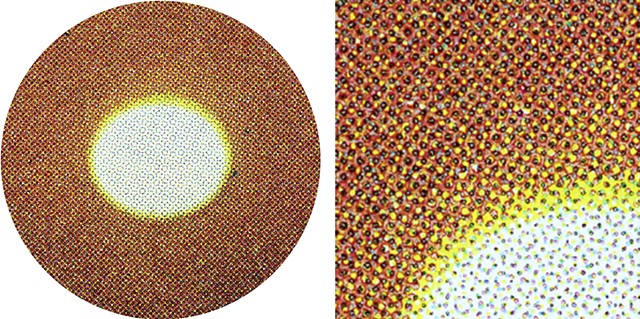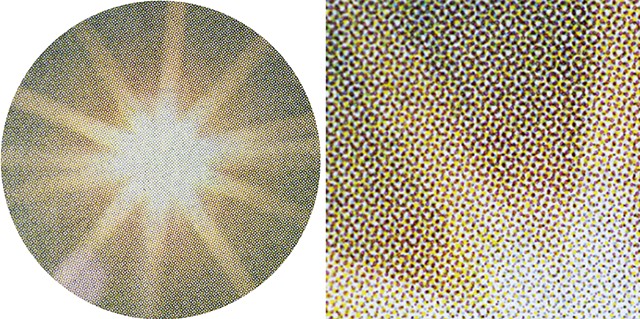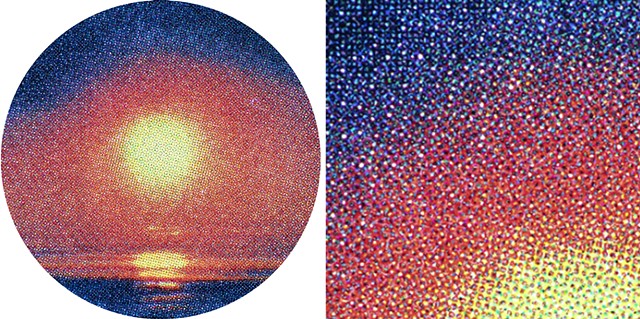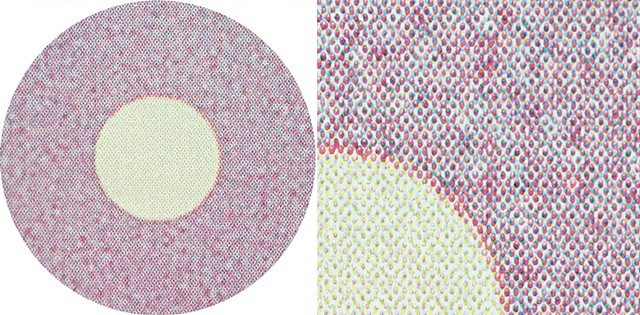Resolution
Resolution is a series of images created as permanent artworks which live aboard a National Geographic arctic icebreaker ship of the same name.
Taking the concept of resolution as both a literal and metaphoric starting point, artists Andrew Bearnot and Jenny Kendler present two projects which challenge our notions of visual veracity and invite a closer read of cultural representations of the natural world.
In the stairwell, the artists created two 50 foot cascades of handblown glass polar bear hairs. These glistening hairs, created at over 1000x magnification, clarify a common misconception: polar bears are not white. Drawing from the natural history museum ‘study object,’ intended to expose unseen morphology, these sculptural hairs reveal that the polar bear’s iconic white fur is, in fact, a multitude of clear, hollow tubes set against black skin—an ideal thermodynamic system for trapping heat in an frigid environment. This work reminds us to look more closely, as, in the natural world, all is not as it initially appears.
Throughout the corridors of deck five, Bearnot & Kendler present a second, but related, series: an exploration of the National Geographic photographic archive, investigating the visual representation of the poles—beginning with the earliest frames of film. Using macro photography, the artists have made a close-up study of this archive, meticulously choosing regions from the most iconic images to magnify and rephotograph: the climate change-threatened polar bear floating on an iceberg, the visual tropes of “the explorer,” an Yves Klein-ian penguin “leaping into the void”. These miniature moments, which may have once passed under the fingers of the magazine’s readers, are then reprinted—as if each drop of ink was lifted off the page and magnified on bare metal for examination—revealing the artifice of the technique which allows us, the reader, to imagine we are seeing something for ourselves.
Each work’s title is excerpted from the caption which accompanied the printed image in the magazine. In elided form, these phrases become loaded poetry—and pair with a credit to the original photographers—who were overwhelmingly white, Western, heteronormative and male. This project serves as a reminder that our understanding of these distant worlds is constructed: by the dots on the page, by the hands holding the camera, by the cropping of the frame. Through re-lensing images so iconic they have become cliche, the artists ask us to look with fresh eyes at a rapidly changing world we thought we knew.
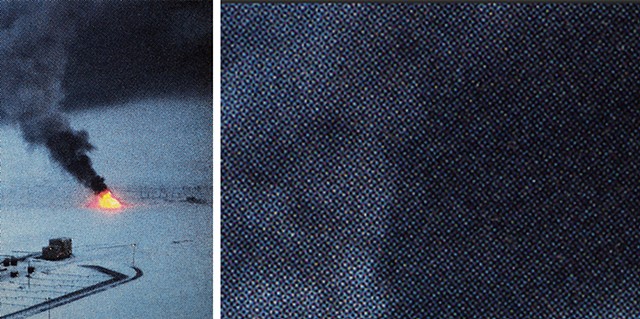
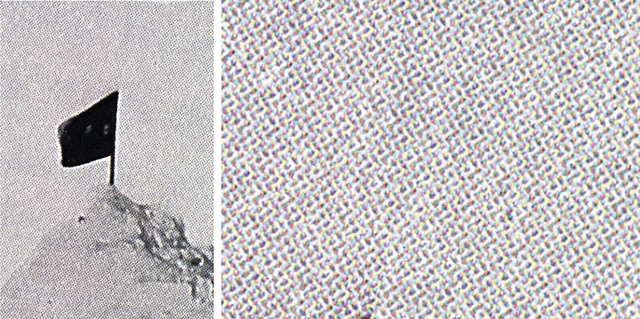

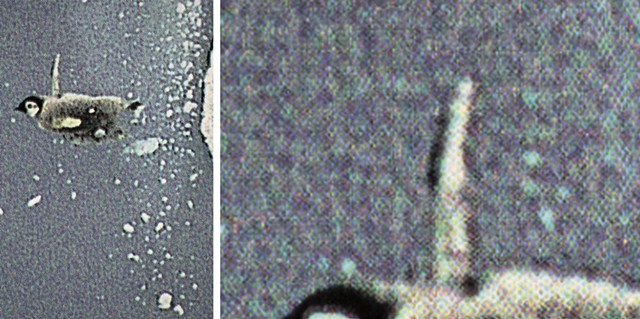
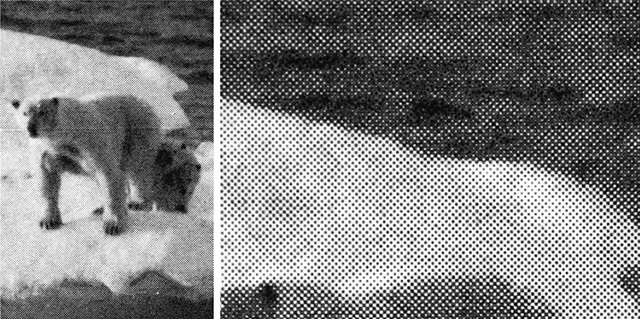
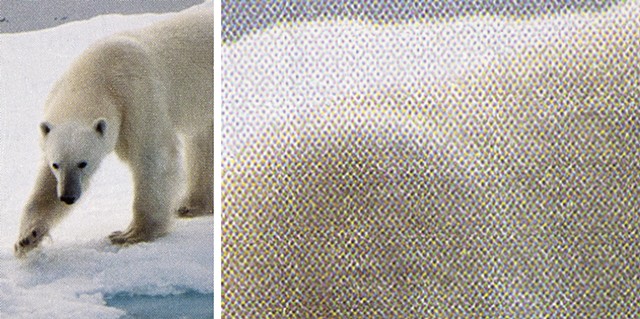
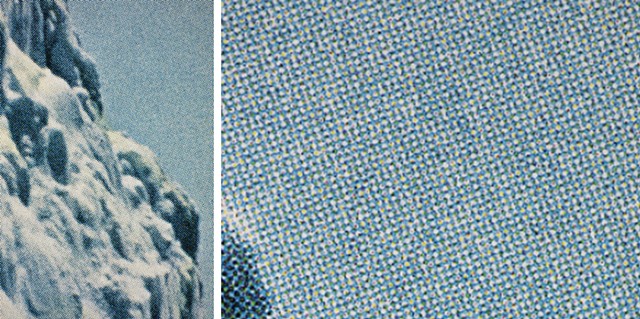
![A Lake of Meltwater [...] Bruises the Greenland Ice Sheet (June 2007, After James Balog)](http://img-cache.oppcdn.com/fixed/37/assets/6VLDXJ59yOZjBivO.jpg)
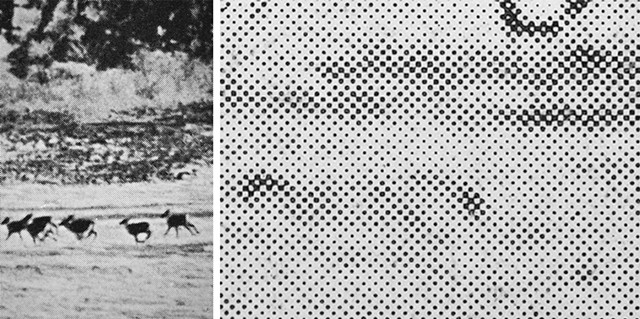

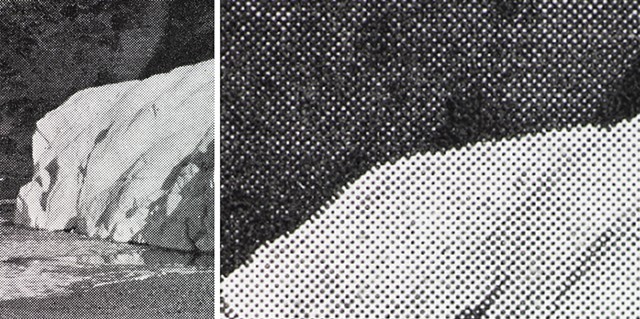
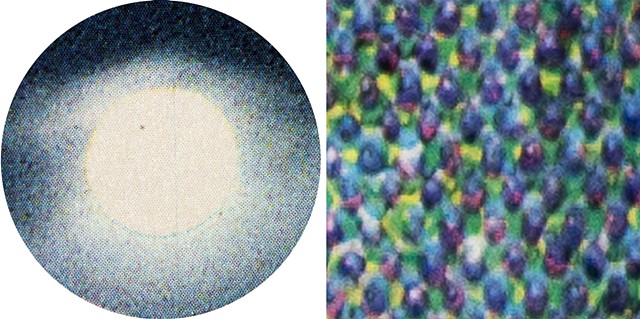
![Cold Fire of the Northern Lights [...] the Planet Venus Shines (November 1965, After V. P. Hessler)](http://img-cache.oppcdn.com/fixed/37/assets/R6PZ_K99H_3Bkc2u.jpg)
